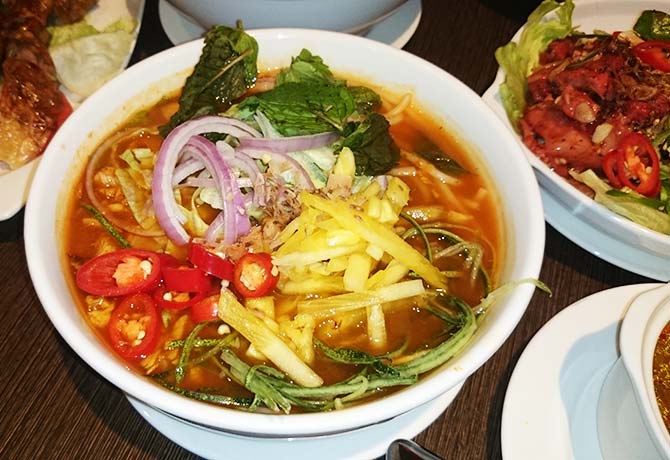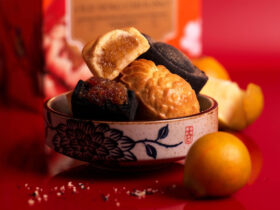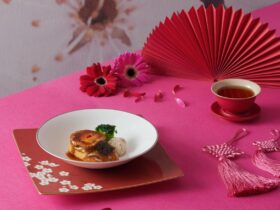The Straits Express at Kallang Wave officially launched this month, carrying three types of Straits cuisines: Peranakan, Anglo-Hainanese and Penang food

The owners of The Straits Express, James Wong, an F&B veteran, and Tony Tan, who also owns China One in Clarke Quay, hatched their latest culinary endeavour based on two main inspirations.
First and foremost, they wanted an establishment that carries the cuisines reminiscent of their childhood days and joys. This led to the idea of an eatery with a nod to our region’s heritage in three types of Straits Settlements cuisines: Peranakan, Anglo-Hainanese and Penang food.
Chef Frankie Ooi was convinced to move from his home in George Town to Singapore, while Anglo-Hainanese Chef Bermuda Say was persuaded to postpone his retirement! The last piece of the puzzle was acclaimed Peranakan Chef Philip Chia.
Together the chefs form a tripartite alliance in the kitchen to create a menu with classic cultural dishes, further elevated by their secret recipes, skills honed from years of experience and meticulous methods.
The concept was further defined in the railway-themed setting with inspiration from the old Orient Express train and the Malaysian railway.

Fragrant Penang Street Food
Penang is most renowned for its fragrant and delicious street food. Chef Frankie Ooi has managed to transport classic Penang street food dishes to The Straits Express here, in better incarnations.
The best dishes I had on the night were from the Penang menu. The Penang Lor Bak ($8++), a tastier version of our ngoh hiang, is great as an appetizer. The freshly-fried aroma of the roll, the crispiness of its skin and the taste upon biting into it all whet my appetite for more.
The Penang Assam Laksa ($8++) was an attractive dish appearing in almost a rainbow of red (chilli), orange (Assam broth), yellow (pineapple), green (vegetables and garnishing) and purple (onions). It was packed with different types of flavours combined in one mouth-watering dish. It was yummy, though I wasn’t used to laksa being that sour. Do note that this is not the usual type of laksa that we have in Singapore.
Another top dish was the savoury and aromatic Penang Fried Kway Teow ($9++). The street food favourite came chock-full of ingredients and is definitely a must-have.

Typical Peranakan Food
I much preferred the Penang food to the Peranakan food. Perhaps there were a few reasons why.
The Nyonya Chap Chye ($9.50++) was typical Peranakan fare, so there was no expectation. The Prawn Belimbing ($18++) was quite tasty yet I felt the overall flavours and the chilli taste could’ve been more pleasing.
The pungent Babi Tohay ($18++) surprised me, and not in such a pleasant way. Perhaps I prefer the sweeter babi pongteh.
The best of the Peranakan lot that I tasted was certainly the Nyonya Mee Siam ($8++). I wished I had a second serving, yet, once again, I’m not sure that it was fantastic.
What is Anglo-Hainanese Food?
Anglo-Hainanese food originated from the kitchens of British households in our colonial past. Then, there were Hainanese ladies (dressed in white sum-fu tops and black trousers) who served as cooks and servants.
Out of the cravings of their colonial employers was born Western food with a Hainanese touch. These dishes include the Hainanese Pork Chop, the Toad in the Hole (a type of sausage pie, $10.50++) and Oxtail Stew ($18.50++). The latter two were pretty good but not particularly memorable.
The Straits Express also has Nyonya Chendol, Durian Pengat and English Apple Pie, and you can choose to end your meal in an Asian or Western style.
The Straits Express, 1 Stadium Place, #01-24/28 & #01-K13/K17, Singapore 397628, Tel: 6702 2964
ADVERTISEMENTS










Leave a Reply